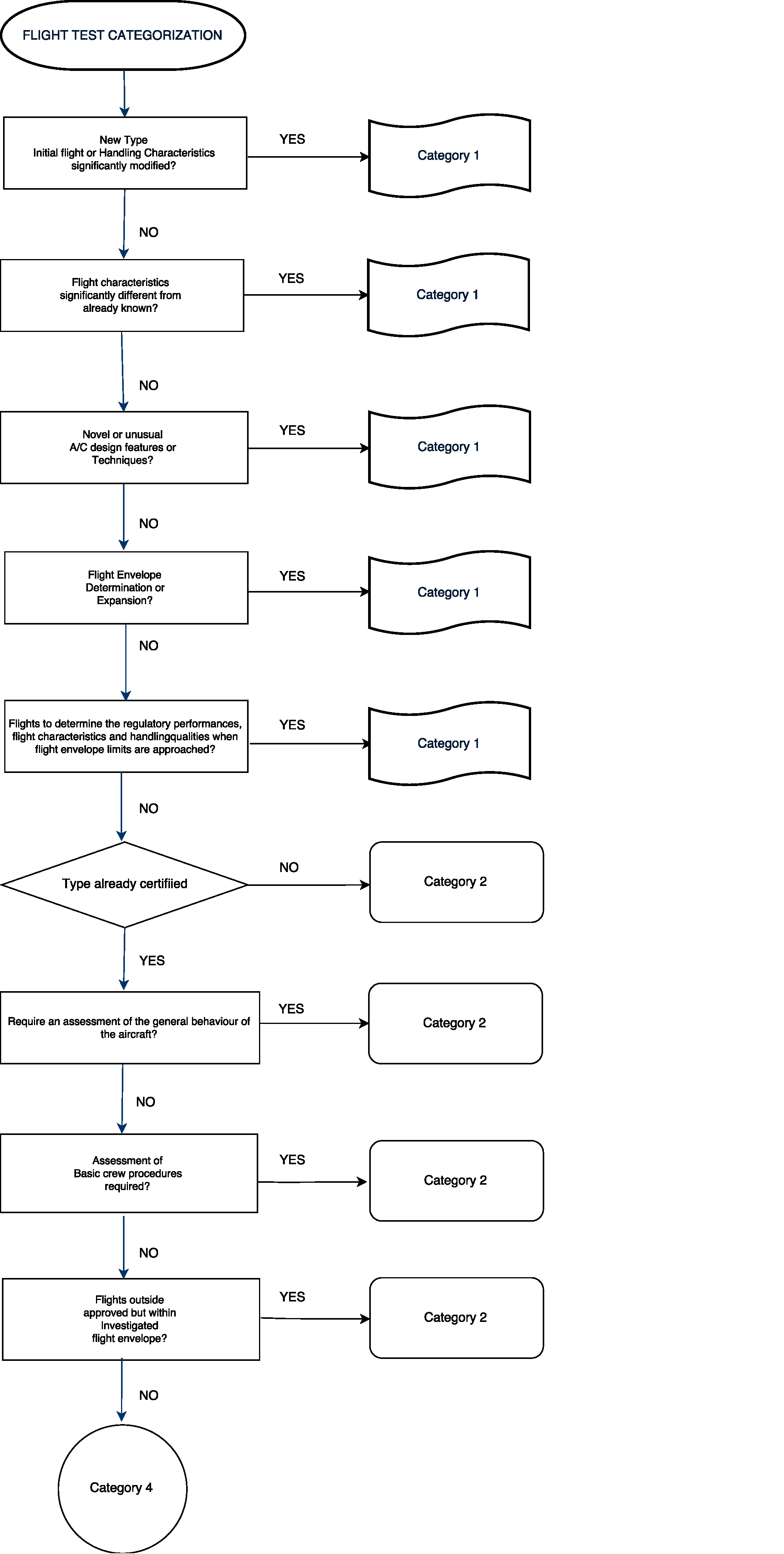How do I know whether a proposed Avionics change or installation is classified Minor or Major by EASA?
This question is answered by reference to the table FAQ table of Avionics change classification.
Flight Test Categories for Rotorcraft - examples
The flight test category (FTC) determination should result from the engineering analysis done by the applicant on the impact of a given change to type-certificate (TC), restricted type-certificate (RTC) or supplemental type-certificate (STC), from a development or compliance demonstration flight perspective. It is not always possible to link a specific task, such as the installation of a new piece of equipment for instance, to a FTC. Each practical case requires a top-down detailed analysis as detailed hereafter.
“It should be noted that the content of the flight test activity determines its category and the FTC determines the required competence of the crew.”
Therefore, for a given flight test campaign performed in the frame of development or certification activities relevant to the issuance of TC, RTC or STC, and changes to those certificates, including different flight tests, different categories may be concurrently selected.
How to determine the appropriate flight test category
The best practice to determine the FTC is to follow a “top-down” approach starting from the definition of Category 1 and moving down, by exclusion, to the other categories until the appropriate category is determined. In order to reach this objective the following flow chart may provide a useful tool.
A thorough knowledge of the activity to be carried out and of the involved flight test techniques are required to perform the assessment.
However, some basic principles are provided as guideline in determining the appropriate flight test category:
A) Flight Tests of a not yet certified A/C should be considered Cat 1 or 2;
B) Flight Tests for a modification of an already certified A/C may be Cat 1, 2 or 4;
Note: Flight Tests which require manoeuvres/conditions which deviate significantly from the STANDARD OPERATIONAL use of the already certified A/C or require the already certified aircraft to be flown outside of the approved envelope should be classified at least as Category 2 FT;
C) A Cat 3 Flight Test (production flight test) can apply only if a TC or STC has been already issued;

The table of FTC examples under the following link: FTC - Table of examples cannot be considered as an exhaustive list of all types of rotorcraft flight tests and categorization according to Appendix XII to Part 21. These examples are provided with the aim to better explain the fundamental principles behind the rules.
“Acceptable Means of Compliance and Guidance Material” may be found here: Acceptable Means of Compliance and Guidance Material
Note: For Flight Conditions approval, the FTC(s) MUST be identified. If more than one category is foreseen, this must be recorded with the appropriate level of detail.
How to address compliance with 27/29.251 (Vibration)?
Vibrations related CS27/29 requirements are:
- CS 2x.251 Vibrations Requirements
- CS 2x.771(c) Pilot compartment
- CS 2x.1321 (f) Arrangement and visibility
- CS 2x.1193 (a) Cowling and engine compartment covering
They have the same objectives: Prevent the risk of excessive vibration to mitigate the risk of
- Damaging systems and primary structure, including its detachment,
- Flutter (coupling),
- Detrimental effects in handling qualities and controllability,
- Detachment of cabin/cockpit items of mass.
For compliance with CS 2x.251 vibrations must be addressed at Rotorcraft level and at Assembly/Part level (regardless of its criticality). This can be demonstrated by:
- Vibration identification by Resonance Assessment Profile (RAP) testing, and
- Flight tests as needed,
- In case of significant vibration, fatigue or damage tolerance evaluation may be necessary.
- Alternatively, when relevant design similarity exists, detailed design review only may be acceptable.
Note 1: care must be taken in the selection of quantitative and/or qualitative vibration evaluation.
Note 2: Flight tests outside of the approved flight envelope might be required.
Is there any regulation for gyroplanes / gyrocopters?
As of today, EASA has not issued any Certification Specification for gyroplanes.
EASA recommends to check first the Maximum Take-off Weight of the gyroplane. If it is below 560 kg, national regulation shall be used: indeed, in accordance with the Regulation (EC) 216/2008, Annex I, gyroplanes with a maximum Take-off Weight below 560 kg belong to the ultralight class.
So far there is no gyroplane type certified by EASA. In case of an application for a type certificate of such a product, the EASA would address the certification basis through e.g. Special Conditions in accordance with Part 21.
Does CS-STAN apply to Rotorcraft?
Yes. However, depending on individual CS-STAN requirements, different prerequisites or limitations are applicable.
How are the Rotorcraft Product categories defined for the calculation of the EASA Fees and Charges?
This question is answered in the FAQ section Fees for the Certification of Products.
How are Personnel Carrying Device Systems (PCDS) approved?
Regulation (EU) No 965/2012 (Air Operations), CS 27.865 and CS 29.865 contain the definitions of “Simple PCDS” and “Complex PCDS”.
The following table summarises the possible post type-certification approval approaches for simple and complex PCDS:
|
|
Simple PCDS |
Complex PCDS |
Notes |
|
Approval under Air Operations |
Yes |
No |
|
|
Design approval / Certification |
Possible (as minor change) |
Yes (as Major Change to a Type Certificate or as Supplemental Type Certificate) |
The EASA Certification Memorandum EASA CM-CS-005 – Helicopter External Loads Personnel Carrying Device System is superseded by the above references |